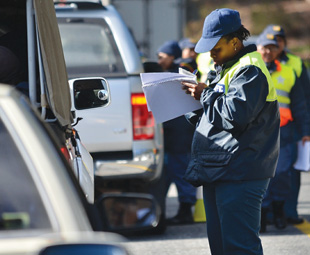An effort by all

The battle for safer roads continues and the transport industry (both the road freight and public sides) has a role to play
Current initiatives to improve road safety in South Africa was a hot topic at the 2017 Southern African Bus Operators Association (Saboa) conference, with Makhosini Msibi, CEO of the Road Traffic Management Corporation, speaking on that exact topic.
“Our roads are a shared space, but they are graveyards and that is something we must turn around,” Msibi began, before highlighting that the South African population (of 56 million), is growing at two-percent per annum, while vehicle registrations increase at three-percent per annum. In 2016, there were 12 million…
“Our road infrastructure needs more space, especially in Gauteng, where 39 percent of the vehicle population is registered annually,” Msibi added.
Fatal crashes are also rising – 2016 recorded the highest rate to date of 14 071, which is an 11-percent increase on 2015.
“This growing number is a failure, and we shouldn’t wait to deal with it. The global average in 2015 was 17,4 fatalities per 100 000 people, South Africa’s average was 26. The fiscus is losing R143 billion per annum (three percent of the gross domestic product in 2015) through road carnage.”
How does the RTMC plan to deal with this? The National Road Safety Strategy, 2016 to 2030, approved by Cabinet on March 29, is the guiding document. The aim is to reduce road fatalities by 50 percent per annum by 2030.
“This will not be possible without partnerships. We need to be direct and take decisive action when dealing with issues,” Msibi said.
The strategy is based on five pillars: road safety management, safer roads and mobility, safer vehicles, safer road users, and post-crash response.
Msibi prioritised innovative education and effective, efficient law enforcement… “We are seeking a partnership with the Department of Education for road safety to become part of the school curriculum. The private sector can also make road safety part of its training,” he said.
“Other priority areas are effective road-safety coordination, funding through investments and partnerships, addressing fraud and corruption, and the promotion of safety standards in line with SANS 39001.”
Msibi called on institutions like Saboa to lend their support. “Of all commuters 42 percent use public transport, nine percent use buses and 27 percent use taxis. If just the bus industry can address its problems, it can deal with up to ten-percent of people at risk each year.
“The bus and taxi industries need to take care of their passengers, who are being killed as a result of the negligence of drivers and the owners of these businesses. People entrust their lives to public transport operators, which is the real cost of a fatal crash,” he concluded.
Published by
Focus on Transport
focusmagsa




